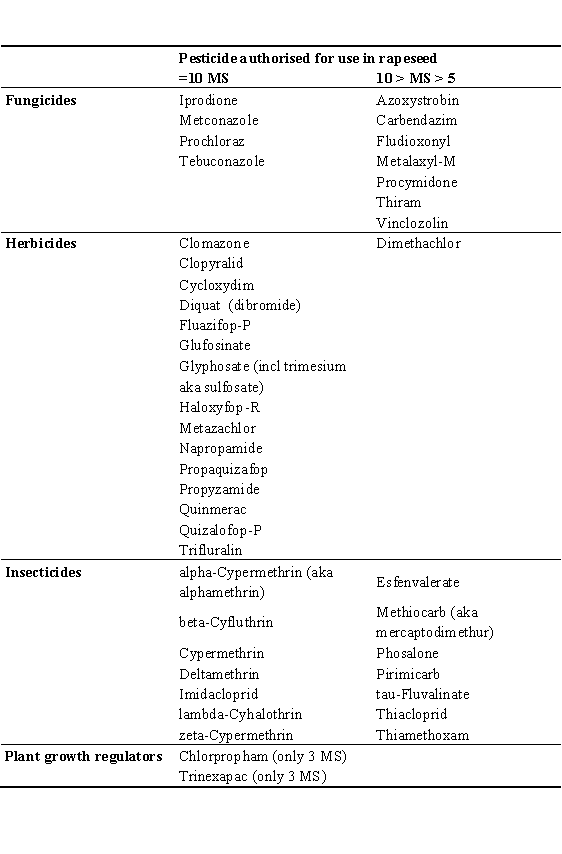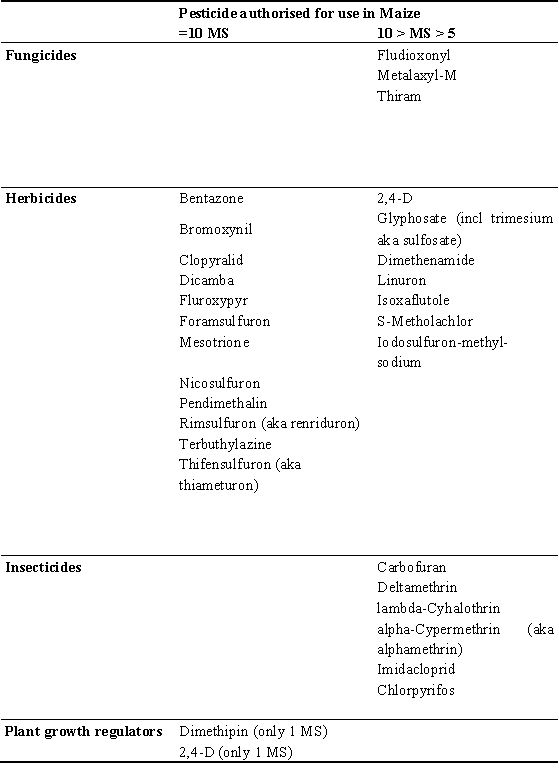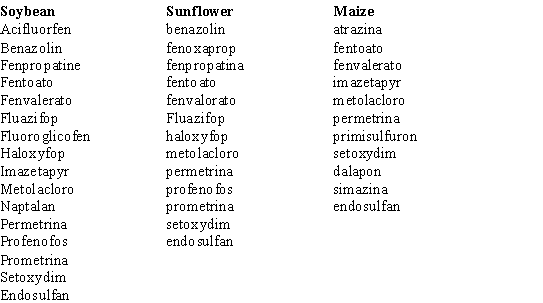Pesticides authorised for use in feeding stuff
The difficulties with pesticide residue analysis of animal feed samples are caused by the fact that these matrices are burdened with large amounts of interfering matrix in the extracts. Animal feeds can be complex mixtures that include constituents such as grains, milling by-products, added vitamins, minerals, fats, and other nutritional and energy sources. Even less complex cereal matrices contain more co-extracts than typical matrices with high water content, such as fruits and vegetables. Additionally, the exact composition of the sample is often unknown to the testing laboratory.
The report published by the Danish EPA in 2007 mentioned in section 2.2 above also includes information on pesticides authorised for use in rapeseed and maize(31) . Rapeseed and maize are potential feeding stuff constituents. Meal cake of rapeseed and other by-products from the rapeseed oil production is also used as feeding stuff. The information on pesticides authorised for use on rapeseed and maize is summarised in Table 3 4 and Table 3 5.
Barley is also a potential feeding stuff constituent and
Table 2 5 indicates that analysis of e.g. several triazoles could be of relevance when analysing barley.
The pesticides included in the list of the top 3 pesticides authorised for use in maize (Table 3 5) are not all included in the list of most commonly authorised pesticides in
Table 2 5. This indicates that several of the most commonly authorised pesticides for use in maize are not included in the list of the 77 substances pending in the EU authorisation system.
The use of pesticides may involve risks and hazards for humans, animals and the environment, especially if placed on the market without having been officially tested and authorised, and if incorrectly used. Imported crops from third countries can be problematic in this regard. For example if pesticides which are not allowed in the EU (annex 1, 91/414) are not stated in the application for export, and if the same pesticides are not included in the monitoring programmes, then the respective pesticides are not kept under surveillance. Finn Vestergaard from Danish Cooperative Farm Supply listed a provisional list of problematic pesticide/crop combinations for Argentina under EU Regulation 396/2005. All of these pesticides have not been included in Annex I of Directive 91/414 and are therefore not allowed in the EU, but they could be relevant to monitor with regard to illegal use and imported feed.
Table 3.4. Pesticides authorised for use in rapeseed in ten or more of 17 member states and in less than 10 but more than 5 member states.
Table 3.5. Pesticides authorised for use in maize in ten or more of 17 member states and in less than 10 but more than 5 member states.

Table 3.6. List of problematic pesticide/crop combination for Argentina (19)
Find more information in the menu below:
Published 13-07-2010, 14:47:29
Top of Page
